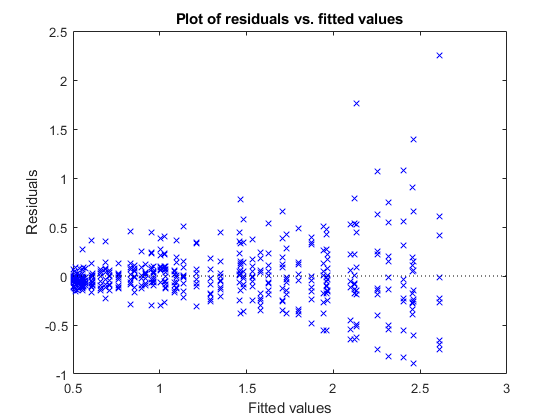Regression
Regression models describe the relationship between a response (output) variable, and one or more predictor (input) variables. Statistics and Machine Learning Toolbox™ allows you to fit linear, generalized linear, and nonlinear regression models, including stepwise models and mixed-effects models. Once you fit a model, you can use it to predict or simulate responses, assess the model fit using hypothesis tests, or use plots to visualize diagnostics, residuals, and interaction effects.
Statistics and Machine Learning Toolbox also provides nonparametric regression methods to accommodate more complex regression curves without specifying the relationship between the response and the predictors with a predetermined regression function. You can predict responses for new data using the trained model. Gaussian process regression models also enable you to compute prediction intervals.
Regression Basics
- Train Regression Models in Regression Learner App
- Linear Regression
- Generalized Linear Models
- Nonlinear Regression
- Linear Mixed-Effects Models
- Gaussian Process Regression Models
- Introduction to Feature Selection
- Interpret Machine Learning Models
- Machine Learning for Regression (MathWorks Teaching Resources)
Categories
- Regression Learner App
Interactively train, validate, and tune regression models
- Linear Regression
Multiple, stepwise, multivariate regression models, and more
- Generalized Linear Models
Logistic regression, multinomial regression, Poisson regression, and more
- Nonlinear Regression
Nonlinear fixed- and mixed-effects regression models
- Support Vector Machine Regression
Support vector machines for regression models
- Gaussian Process Regression
Gaussian process regression models (kriging)
- Regression Trees
Binary decision trees for regression
- Regression Tree Ensembles
Random forests, boosted and bagged regression trees
- Generalized Additive Model
Interpretable model composed of univariate and bivariate shape functions for regression
- Neural Networks
Neural networks for regression
- Incremental Learning
Fit linear model for regression to streaming data and track its performance
- Direct Forecasting
Perform direct forecasting using regularly sampled time series data
- Interpretability
Train interpretable regression models and interpret complex regression models
- Model Building and Assessment
Feature selection, feature engineering, model selection, hyperparameter optimization, cross-validation, residual diagnostics, and plots
- Python Model Coexecution
Load and coexecute Python machine learning models for prediction in Simulink






